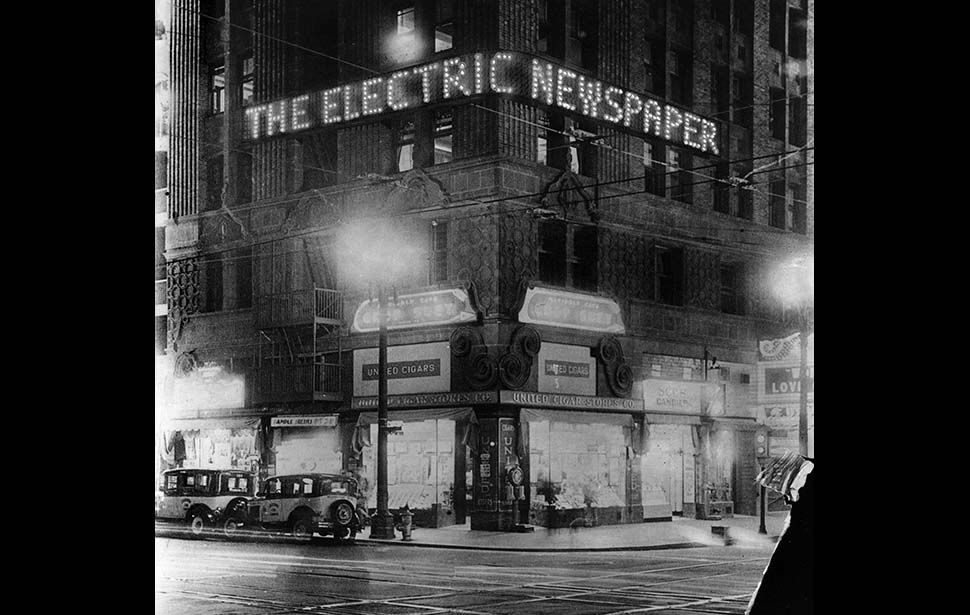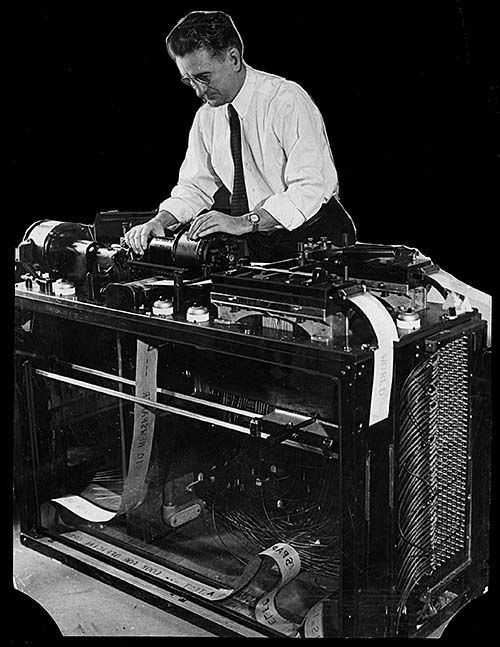
L.A. Times
The Times-Richfield ‘Electric Newspaper’
Posted By: Scott Harrison
Posted On: 12:30 a.m. | May 23, 2013
Oct. 1931: The Los Angeles Times-Richfield ‘Electric Newspaper’ lights up during preview at the corner of 6th and Hill streets.
The Oct. 12, 1931, Los Angeles Times proudly announced:
Beginning tonight at 7 o’clock and every night thereafter including Sunday, from 7 o’clock until midnight or thereabouts, the news of the world will march around the corner of 6th and Hill streets in incandescent letters four feet high.
This unique news bulletin service, the first of its kind in America, is made possible by the collaboration of the Los Angeles Times and Richfield Oil Co., and will be known at the Los Angeles Times-Richfield Electric Newspaper.
Everything that is news – local, state, national and world – will pass across the board during the five hours of its nightly operation. As the vast grist of the day’s news pours into The Times’ offices by telegraph, telephone, radio, mail and messenger, it will be concentrated into brief, snappy, informative bulletins by expert newspaper men and flashed by teletype to an office in the Paramount building at 6th and Hill, where is located the huge controller of the electric bulletin board. Here another squad of men will transcribe the bulletins by stenciling machines on the wide, endless tapes which, fed into the controller, project their perforated letters on the screen, made up of electric lights in multiple banks. The effect is that of letters of light, forming words and sentences and moving continuously from one end of the board to the other, a distance of some eighty feet.
The bulletin board has a frontage of about forty feet on 6th and the same distance on Hill Street, and the four-foot letters can be read for several blocks in all directions. The device by which each letter is made apparently to move the whole length of the board makes it possible to read everything flashed, even from points where only a small part of the board is visible.
Attesting his keen interest in this important forward step in modern methods of disseminating public information, Gov. James Rolph Jr. will personally open the service tonight with a brief message addressed to the people of Los Angeles.
It is estimated that some 300 separate and different bulletins, each representing an important piece of news and the whole constituting a condensed daily history of the world, will be flashed on the board in the five hours of operation. To accommodate the changing crowds, news of major importance will be repeated at intervals.
A story in the Aug., 1980, Times employee publication Among Ourselves, on the 1931 ‘Electric Newspaper’ added:
It was apparently thought that the flashing bulletins would stimulate Los Angeles residents to buy the paper the next day to read details behind the headlines. The Times faced stiff competition from several metropolitan papers during the ’30s, and having control of the bulletins read by thousands of people downtown was considered something of a coup.

L.A. Times
Oct. 1931: The controller of the Times-Richfield ‘Electric Newspaper’